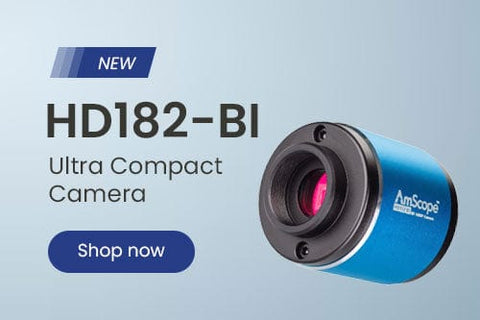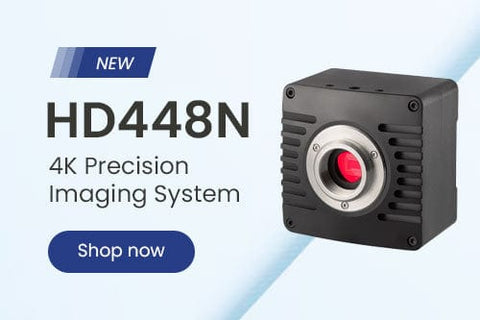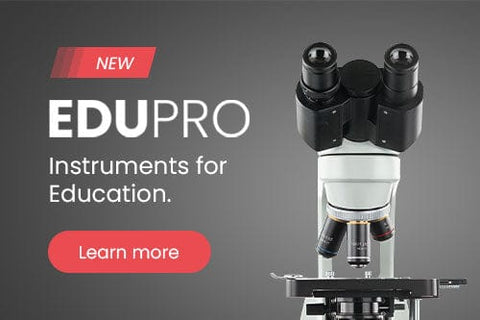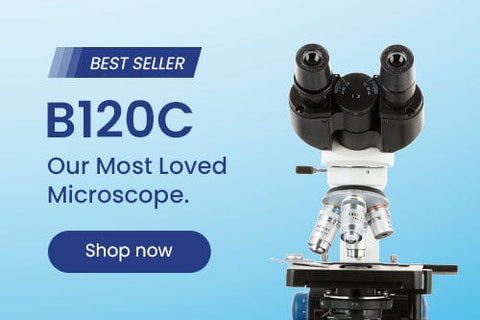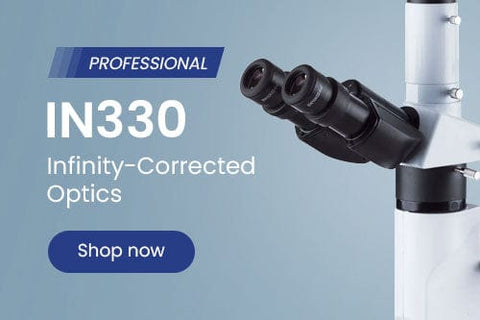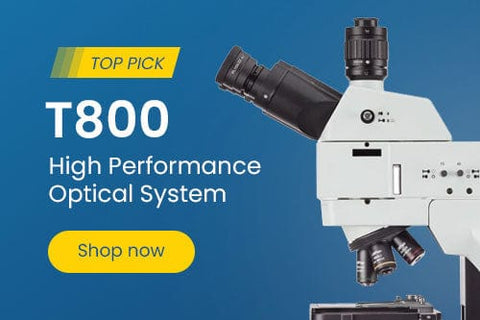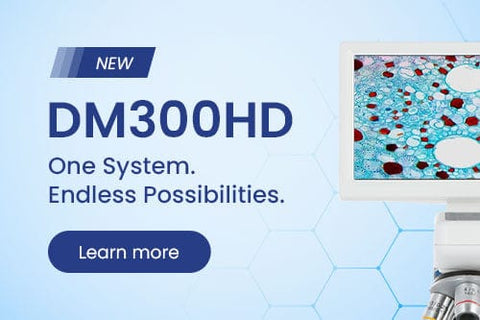- Microscopes
- Cameras
- Lab Supplies & Equipment
- Shop By Brand
- Lab Supplies by Category
- Analyzer Consumables
- Balances
- Bags
- Beakers
- Bench Scale Bases
- Bottles
- Bottletop Burettes
- Bottletop Dispensers
- Boxes
- Blank Microscope Slides & Cover Slips
- Blood Collection
- Caps
- Carboys
- Centrifuges
- Centrifuge Tubes
- Cold Storage
- Containers
- Cryogenic Vials
- Culture Tubes
- Cylinders
- Dispensers
- Digital Dry-Baths
- ESR Products
- False Bottom Tubes
- Flat Bottom
- Funnels
- Gel Documentation
- Glassware
- Glass Test Tubes
- Histology
- Homogenizers
- Hotplates-Stirrers
- Inoculation Loops and Spreaders
- Liquid Handling Products
- Manual-Electronic Pipettors-Pipettes
- Microscope Slides
- Overhead Stirrers
- Pipette Controller (Serological Filller)
- Pipette Tips
- Plastic Test Tubes
- PCR Tubes, Strips & Plates
- Racks
- Repeater Pipettor
- Rockers
- Rotary Evaporators
- Serological Pipettes
- Shakers
- Spectrophotometers
- Syringe Tips
- Sample Tubes
- School/Classroom Supplies
- Screwcap Test Tubes
- Self-Standing
- Test Tube Racks
- Test Tubes & Vials
- Transport & Storage Tubes
- Thermal Mixers
- Transfer Pipets
- Urinalysis
- Vacuum Pumps
- Weighing Dishes
- Lab Equipment
- Balances
- Bench Scale Bases
- Centrifuges
- Digital Dry-Baths
- Gel Documentation
- Homogenizers
- Hotplates-Stirrers
- Overhead Stirrers
- Pipettors
- Rockers
- Rotary Evaporators
- Shakers
- Serological Pipettes
- Spectrophotometers
- Thermal Mixers
- Vacuum Pumps
- Liquid Handling Products
- Manual-Electronic Pipettors-Pipettes
- Pipette Tips
- Racks
- Pipette Fillers-Controllers
- Repeater Pipettor
- Syringe Tips

Cost effective products and solutions designed to improve laboratory efficiency, safety and results.
SHOP BENCHMARK SCIENTIFIC >
- Slides & Accessories
- Slides
- Cameras
- Illuminators
- Adapters
- Eyepieces / Objectives
- Bulbs
- Magnifying Lamps
- Monitors and Tablets
- View All Categories
- Adapters
- DSLR Adapters
- USB Camera Adapters
- Ring Light Adapters
- Power Adapters
- Barlow Lens
- Books & Experiments Cards
- Bags & Cases
- Bags
- Cases
- Cameras
- Circuit Board Holders
- Cleaning Kits
- Condensers
- Darkfield
- Phase Contrast Kits
- Polarizing Kits
- Dust Covers
- Eye-Guards
- Eyepieces
- 20mm
- 23mm
- 30mm
- 30.5mm
- Filters
- Microscope Filters
- Illuminator Filters
- Fluorescence Kits
- Conversion Kits
- Filter Cubes
- Focusing Racks
- Fuses
- Illuminators
- Bulbs
- LED Illuminators
- Fiber Optic Illuminators
- Fluorescent Illuminators
- Ring Lights
- Stand Lights
- Goosenecks
- Gooseneck Attachments
- Immersion Oils
- Loupes
- Magnifying Lamps
- Clamp Lamps
- Desktop Lamps
- Rolling Stand Lamps
- Mechanical Stages
- Monitors and Tablets
- Calibration Slides & Stage Micrometers
- Stage Warmers
- Stain Kits
- Stands
- Articulating Arm Stands
- Boom Stands
- Table Stands
- Tweezers
- Other Accessories
- Shop By Industry
- Shop By Industry
- Botany
- Agronomy & Forestry
- Horticulture
- Phytopathology
- Chemistry
- Biochemistry
- Biotechnology
- Cannabis
- Pharmaceutics
- Consumables
- Beer & Wine
- Cosmetics
- Food & Beverage
- Electronics
- Circuit Boards & General Electronics
- Mobile Phone Repair
- Semiconductors & Wafers
- Environmental
- Asbestos
- Ecosystem Research
- Mud Logging
- Soil Treatment
- Water Treatment
- Forensics
- Ballistics
- Fingerprint Analysis
- Genetic Identification
- Hair & Fiber Analysis
- Handwriting Analysis
- Industrial
- Aerospace
- Automotive
- Dental Lab & Production
- Glass Industry
- Industrial Inspection
- Mechanical Parts
- Paper Industry
- Petrochemical
- Plastics
- Printing Industry
- Quality Assurance & Failure Analysis
- Textiles & Fibers
- Tool Making
- Wood Production
- Jewelry & Gemology
- Engraving
- Gemology
- Jewelry Repair
- Stone Setting
- Watch Repair
- Hobby
- Coins & Collecting
- Stamps
- Modeling & Assembly
- Sculpting
- Repair
- Telescopes
- Metallurgy
- Archaeology
- Geology
- Mining
- Petrology
- Medical & Microbiology
- Anatomopathology
- Bacteriology
- Biochemistry
- Cell Culture
- Cytology
- Dental Microbiology
- Dermatology
- Dissection
- Gout & Rheumatology
- Hair & Fiber Analysis
- Hair Transplant
- Fluorescence
- Hematology & Live Blood Analysis
- Histopathology
- Mycology
- Medical Devices
- Microsurgery
- Neuropathology
- Oncology
- Parasitology
- Pathology
- Semen Analysis
- Virology
- Veterinary & Zoology
- Breeding & Semen Analysis
- Entomology
- Fecal Smears & Floats
- Marine Biology
- Ornithology
- Veterinary Medicine
- Zoology
- Shop By Industry
- Students
- Telescopes
- Buy With Prime
- Sale
- Compound Microscopes
- Shop By Brand
- AmScope
- Euromex
- Omax
- Shop by Head Type
- Binocular
- Monocular
- Trinocular
- Multi-head & Training
- Shop By Specialty
- Brightfield
- Darkfield
- Phase Contrast
- Inverted
- EPIfluorescence
- Polarizing
- Digital Integrated
- Metallurgical
- Shop By Application
- Education
- Research
- Veterinary
- Compound With Digital Head
- Shop Best Sellers
- Shop All Compound
- Stereo Microscopes
- Shop By Brand
- AmScope
- Euromex
- Shop By Objective Type
- Fixed Power
- Zoom Power
- Single Lens
- Common Main Objective
- Shop By Stand Type
- Articulating Arms
- Boom Stands
- Gooseneck Stands
- Table Stands
- Other Stands
- Shop By Head Type
- Binocular
- Monocular
- Trinocular
- Simul-Focal
- Shop By Industry
- Video Inspection
- Industrial Inspection
- Microscope Heads
- Shop Stands
- Articulating Arm
- Boom Stands
- Table Stands
- Stereo With Digital Head
- Shop Best Sellers
- Shop All Stereo
- Specialized Microscopes
- Digital Microscopes
- Kids, Student Microscopes
| Amscope Team
The Rise of Digital Microscopy and Its Advantages
 e to their design and the way they are operated, traditional analog microscopes can be a chore to use. You may get tired of hunching over your microscope for long hours and straining your eyes as you squint at slides. Analog microscopes also make it difficult to quickly share your images with anyone who isn’t physically with you, since you need to look through the eyepiece to view a sample.
e to their design and the way they are operated, traditional analog microscopes can be a chore to use. You may get tired of hunching over your microscope for long hours and straining your eyes as you squint at slides. Analog microscopes also make it difficult to quickly share your images with anyone who isn’t physically with you, since you need to look through the eyepiece to view a sample.
Digital microscopy addresses many of the issues that analog microscopes present. A digital integrated microscope combines the traditional aspects of the instrument with a digital camera. The microscope may have a camera you can connect to your computer using a USB cable, or it may have a built-in screen for live image viewing.
Some digital microscopes, like the High-Performance Trinocular Compound Microscope, allow you to view samples two ways: through eyepieces or an integrated camera that projects images onto an attached touchscreen. Other models, such as the 40X-2000X 720 P HDMI Screen Compound Microscope, have no eyepieces, meaning you can only observe samples through the camera screen.
All versions of the digital microscope improve your workflow by making it easier to view samples and share images with others. These instruments have a variety of practical uses, making them a smart investment for many microscope users. And thanks to recent advances in technology, digital microscopes are more accessible and affordable than ever.
How Digital Microscopy Has Evolved Over Time
Digital microscopy is a new trend that has emerged within the last two decades. Prior to this innovation, researchers primarily used film to reproduce images from their microscopes. Up until the early 2000s, for instance, some scientists used cameras loaded with 35 mm film and light microscopes equipped with special projection eyepieces to take photographs of samples. This process was slow and time-consuming, requiring the photographer to set up the camera just right and then develop the film.
Beginning in the 1990s, digital imaging began to replace film. Colleges and research facilities were some of the first institutions to embrace digital microscopes. For example, Washington University in St. Louis acquired their first digital microscope in the early 1990s. This early iteration of a digital microscope used deconvolution software, an image processing technique that deblurred the captured images.
Today, digital microscopes have become more affordable and refined as camera technologies evolve. These modern instruments also incorporate more advanced features that earlier digital microscopes lacked, like USB ports and Wi-Fi connectivity.
What Are the Advantages and Uses of Digital Microscopy?
Digital microscopy has many useful applications in settings such as classrooms, healthcare clinics, and research laboratories. These devices have surged in popularity because they offer numerous benefits over traditional microscopes.
Technological Advancements Compared to Other Types of Microscopes
All microscopes have the same central functions: they use lenses to focus light and magnify small objects for the viewer. However, digital microscopes have several technological advancements that set them apart from more traditional microscopes, including:
- The ability to store images onto a hard drive or USB drive for later use
- Advanced software that allows you to analyze 3D samples, edit and record video footage, and generate reports
- An anti-halation layer and high dynamic range to reduce glare and sharpen contrast
- Encoding parameters like camera settings and lighting allows for repetitive workflows and quick documentation
- High numerical aperture for better resolution
- Higher levels of magnification
- Larger sensor size
- More compact cameras and touchscreens
- Ergonomic design for more comfortable use
However, digital microscopes do have a few disadvantages when compared to traditional microscopes, such as:
- More components create a higher margin of error
- They always require a power connection
- Some versions don’t have traditional eyepieces, which can provide more depth perception than a digital camera when viewing samples
Applications in the Clinical Setting
Digital image microscopy has many important uses in clinical settings, such as hospital laboratories and veterinary clinics. Using a digital microscopy camera, health care professionals can:
- Diagnose diseases and disorders accurately and quickly
- Examine blood cells, feces, skin scrapings, and other bodily fluids for signs of abnormality
- Improve access to healthcare by not requiring patients to travel to a second laboratory facility for testing
- Share images with patients and specialists
Improvements in Failure Analysis
Mechanical and structural engineers have also adopted digital microscopy to find and prevent failures in electronics and other products. For instance, a digital microscope can be used to search for failures and flaws in:
- 3D printed objects
- Electronic circuit boards
- Mechanical components
- Solder connections
- Steel
Flaws in the components of electronic devices and mechanical structures can endanger lives and result in expensive lawsuits for companies. Digital microscopes can help prevent these serious issues.
Working with Digital Pathology Image Analysis
Digital pathology image analysis enables educators, health care providers, and other individuals to share digitized images in real-time. This process involves a few simple steps:
- An on-site pathologist cuts and stains samples
- A digital microscope is used to capture whole-slide images
- The digitized images are sent to a reporting pathologist or specialist for examination
- A copy of the digitized images are stored for later use
Pathologists can also use artificial intelligence (AI) tools to analyze digitized slides, allowing for more accurate diagnoses. Digital pathology image analysis also helps redistribute workloads across health care facilities because off-site pathologists can analyze samples.
Machine Learning Methods
Finally, you can use machine learning methods for the quantitative study of digital microscopy images. Machine learning scientists are currently developing data-driven approaches that use algorithms to automatically and accurately analyze images captured by digital microscopes.
Examples of ways that you can use machine learning methods with digital microscopy include:
- Define and visualize an image generation pipeline
- Image to image translation
- Input images to produce feature maps
- Monitor training loss
These techniques can be used in a variety of disciplines, such as medicine and physics. For example, digital holographic microscopy can be used with machine learning to distinguish between apoptosis and necroptosis in cancer cells. Other common applications for machine learning methods in digital microscopy include accurate particle tracking, image resolution, and object counting.
Join the Trend Towards Digital Microscopy With Quality Microscopes
A digital microscope is a smart investment for any clinician, hobbyist, or researcher. If you’re ready to join the growing number of digital microscope users, AmScope has a variety of instruments to fit every budget and setting. Our digital microscopes range from inexpensive instruments made for children to high-powered devices equipped with 4K HDMI cameras.
Not sure which digital microscope is right for you? Reach out to our expert representatives today and we can help you find the perfect microscope.
Free Shipping on orders $149+
Same day shipping for orders within the contiguous U.S.
Easy Returns
Hassle-free 30-day return policy. 100% satisfaction guarantee.
Quality Products
5-year warranty on AmScope microscopes.
Got a question?
Speak to our team of experts and find the products you need.
